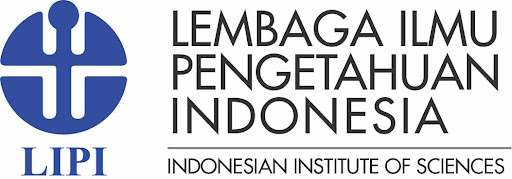A CORPUS-BASED ANALYSIS OF FIRST-PERSON PRONOUN IN NIKI’S SONG
DOI:
https://doi.org/10.33752/teflics.v4i2.7541Keywords:
corpus, first-person pronoun, songAbstract
This study aims to analyze the use of first-person pronouns in NIKI's song lyrics, focusing on their frequency, pattern, and context of usage. The research employs a descriptive qualitative-quantitative approach, combining corpus analysis with contextual interpretation. The data consists of song lyrics from NIKI's albums and popular tracks, formatted into a compatible text file (.txt) for analysis using AntConc software version 4.3.1. Data collection involved gathering lyrics from reliable sources, cleaning the data, and preparing it for analysis. The analysis process included identifying the frequency of first-person pronouns, observing distribution patterns through the concordance feature, and interpreting the context and meanings of pronoun usage. The findings reveal a dominance of the pronoun "I" (589 occurrences) over "We" (138 occurrences), indicating a focus on individual experiences and emotions in NIKI's lyrics. The study identifies various patterns, including "I + to be," which reflects deep emotional states, self-reflection, and regret; "I + modal," which conveys feelings and desires; and "I + verb," which directly expresses actions and emotions. Additionally, the "We" patterns, such as "We + To Be" and "We + Modal," illustrate collective experiences, possibilities, and relationship dynamics. The results highlight the contrasting roles of individual and collective perspectives in NIKI’s songwriting, enriching the emotional depth of her lyrics.
Downloads
References
Afzaal, M., Naqvi, S. B., & Raees, G. R. (2022). Representations of Naya Pakistan: A corpus-based study of Pakistani media discourses. Asian Journal of Comparative Politics, 7(3), 521–538.
Alfaifi, A., & Atwell, E. (2016). Comparative evaluation of tools for Arabic corpora search and analysis. International Journal of Speech Technology, 19, 347–357.
Alfiyani, W. (2021). TYPE AND MEANING OF THE FIGURATIVE LANGUAGE FOUND IN NIKI’S SELECTED SONGS’LYRICS. Jurnal CULTURE (Culture, Language, and Literature Review), 8(2), 156–169.
Almujaiwel, S. (2020). A comparative evaluation of POS tagging and N-gram measures in Arabic corpus resources and tools. International Journal of Computational Linguistics (IJCL), 11(1), 1–17.
Childress, A., & Lou, M. (2023). Illness Narratives in Popular Music: An Untapped Resource for Medical Education. Journal of Medical Humanities, 44(4), 533–552.
Çyfeku, J. (2022). Corpus linguistics and technology integration in SLA; Generating language tasks through SKETCH engine. Journal of Positive School Psychology, 6(9), 1445–1458.
Demissie, B. (2023). The portrayal of COVID-19 in Ethiopian song lyrics. Cogent Arts & Humanities, 10(1), 2259669.
Gries, S. T. (2009). What is corpus linguistics? Language and Linguistics Compass, 3(5), 1225–1241.
He, Q. (2021). A corpus-based study of interpersonal metaphors of modality in English. Studia Neophilologica, 93(1), 50–71.
Hidayah, A. G. D., & Bustam, M. R. (2023). ANALYSIS OF DENOTATION AND CONNOTATION MEANINGS IN THE SONG LYRIC “LA LA LOST YOU” BY NICOLE ZEFANYA (NIKI). Mahadaya: Jurnal Bahasa, Sastra, Dan Budaya, 3(1), 41–48.
Kartika, S. (2024). Exploring Deixis in Taylor Swift’s Song’Cardigan’: A Descriptive Qualitative Analysis. LinguaEducare: Journal of English and Linguistic Studies, 1(1), 32–43.
Khasawneh, Y. J. A., & Khasawneh, M. A. S. (2023). The Role Of Corpus Linguistics In Translation Teaching And Research; Analysing The Perspectives Of Doctorate Researchers And Lecturers. Journal of Namibian Studies: History Politics Culture, 34, 7078–7101.
Li, K., & Zhang, Q. (2022). A corpus-based study of representation of Islam and Muslims in American media: Critical Discourse Analysis Approach. International Communication Gazette, 84(2), 157–180.
Lüdeling, A., & Merja, K. (2008). Corpus linguistics. Mouton de Gruyter Berlin.
McEnery, T., & Hardie, A. (2011). Corpus linguistics: Method, theory and practice. Cambridge University Press.
Meyer, C. F. (2023). English corpus linguistics: An introduction. Cambridge University Press.
Mukminin, M. S. (2024). NOSTALGIA IN SONG LYRICS: A SEMIOTIC ANALYSIS OF NIKI’S ‘HIGH SCHOOL IN JAKARTA.’ Research on English Language Education, 6(2), 14–26.
Putra, A. S., Qodriyati, N. L., & Maharani, I. S. (2024). LEXICAL SEMANTIC ANALYSIS ON THE LYRICS OF NIKI’S SONG “OCEANS AND ENGINES.” VARIABLE RESEARCH JOURNAL, 1(02), 575–584.
Swindali, T. (2020). Music Elements: Music Theory, Songwriting, Lyrics & Creativity Explained. Tommy Swindali.
Wang, S., Tseng, W.-T., & Johanson, R. (2021). To we or not to we: Corpus-based research on first-person pronoun use in abstracts and conclusions. Sage Open, 11(2), 21582440211008892.
Wang, Z., Liu, K., & Moratto, R. (2023). A corpus-based study of syntactic complexity of translated and non-translated chairman’s statements. Translation & Interpreting: The International Journal of Translation and Interpreting Research, 15(1), 135–151.
Yuliana, R., Arjulayana, A., Roveneldo, R., Hakim, L., Kastri, E. M., Idris, A. R., & Meutia, D. (2024). BTS Beyond Beats: Disclosing Semantics Through Lyric Analysis. World, 14(4), 264–275.
Yuniar, D. H. (2024). The Portrayal of Contemporary Love in NIKI’s Dancing with the Devil Song. Journal of Music Science, Technology, and Industry, 7(1), 133–143.

Downloads
Published
How to Cite
Issue
Section
License
Copyright (c) 2024 Teaching English as Foreign Language, Literature and Linguistics

This work is licensed under a Creative Commons Attribution-ShareAlike 4.0 International License.















